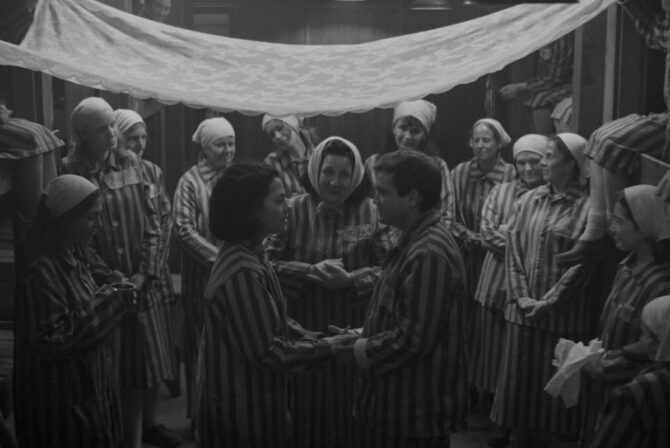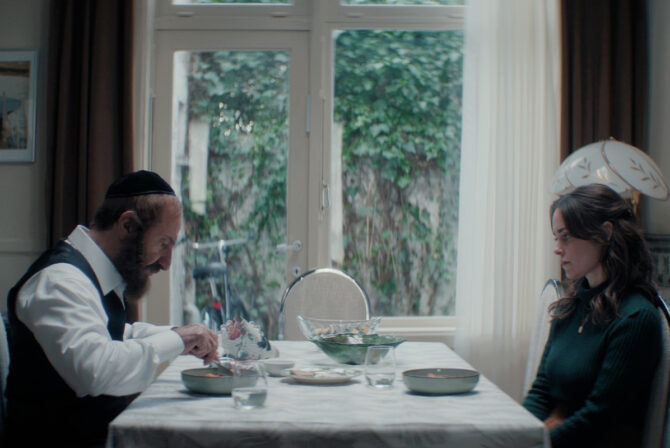When I was a child, Lag B’omer was one of my favorite holidays. We started preparing for the bonfire we had weeks in advance. My sister and I would head out on longer and longer scavenging strolls through the neighborhood, developing stamina (and collecting blisters) as we climbed over walls and crawled under fences in search of dry wood. Then we marched home with our findings, sweaty, scratched, but puffed with pride.
In between these walks, we spent hours devising ways to hide and guard our spoils from the older kids in the neighborhood, who weren’t always above stealing wood from people’s yards. Alert, and in our own eyes, valiant, we patrolled our street, our backs erect. On the night of Lag B’omer itself, we would watch the fruits of our labor going up in smoke, cooking tin-foil-covered potatoes as they burned; we practically glowed with pride.
But had you asked us back then what the holiday was all about, we would have given you confused and messy answers.
We knew, thanks to our religious school, that it had something to do with Rabi Akiva’s students, who died in thousands in a plague because they didn’t treat each other with respect, and whose illness lifted on Lag B’omer. We knew, thanks to Zionist mythology, that it had something to do with bows and arrows, and the Bar Kochva revolt against Rome in 132-136 CE. It was a courageous–though ultimately failed–bid for Jewish sovereignty in Judea.
And we knew that it had something to do with the yahrzeit of Rabbi Simeon bar Yochai, the man who had to hide in a cave for 12 years after criticizing Rome–and being sentenced to death for it.
As the years passed, our enthusiasm for wood-collecting dwindled, but our understanding of the holiday grew. I started seeing the bigger picture behind all the different narratives and motifs. And what I saw, looming behind the arrows and the plague and the random bits of stories and the names of Rabbis past, was the deadly, unforgiving, might of Rome.
Roman troops destroyed the Temple in 70 CE, leaving us scattered, decimated, and confused. A small group of rabbis settled in Yavneh, and created new religious practices and norms. They offered the trodden-down Judeans, a new way of being Jewish in the absence of a temple, and the hope that our nation could go on.
But Rome continued to constrict Jewish practices and life. It continued to tax the Jews, sometimes bleeding them dry. It continued to force upon them what the emperors and their administration saw as right.
Bar Kochva’s revolt erupted within these growing tensions, and Rabbi Akiva, the leading Jewish scholar of his age, supported him with everything he had. Other sages were less confident. What if we lose, they wondered? What if we fail? What kind of repercussions will we face?
For three wondrous years, it appeared as if their worries were misplaced. For those years, Bar Kochva ruled and the taste of freedom flowed, once again, through Jewish veins. And then the Roman troops arrived, crushed the revolt, killed thousands and executed military and spiritual leaders, including Rabbi Akiva himself. This devastated the Jewish hopes for independence for millennia to come.
Rabbi Akiva’s students probably died in battle, not in sick beds. But the surviving Rabbis couldn’t write it for posterity, not when Roman officials breathed down their necks, alert for any sign of belated support or endorsement for the revolt. And so the story of the plague was born: a laundered term to hide the bloodied dream of freedom.
And in the context of that period of suspicions and dread, of Roman soldiers marching in the streets, arresting rabbis, forcing Jewish women into prostitution, and building their empire on Judea’s blood and pain, Rabbi Simeon bar Yochai’s tale makes far more sense.
Once upon a time, the midrash tells us, three rabbis sat and discussed the Roman presence in Israel. One praised Roman technology—the bridges, roads, and aqueducts the conquerors built across the land. The second rabbi remained silent. But Rabbi Simeon, one of Rabbi Akiva’s last surviving students, disagreed. Whatever they built, he told his friends, they built it for their own benefit and profit.
When the Roman authorities heard about this conversation, they gave the first rabbi money, exiled the second to a pro-Roman city (a form of reeducation, presumably, to make him properly enthusiastic about Rome), and sentenced Rabbi Simeon to death.
My children are still too young to collect wood on their own, and I’m too busy to organize a proper bonfire in their stead. But they do learn about Lag B’omer in school (which was this past weekend) and I watch them coming home every year with drawings of arrows and confused tales about plagues and flames. And I ask myself: What is it that they can learn from the actual story of this holiday? What is it that I can pass on to them, to make the random odds and ends make sense, and shape their lives?
The answer came to me when I visited the broken Roman aqueduct in Caesarea. I stood there by the sea, the Roman ruins on one side and an Israeli power plant on the other, and for a second, I thought very much like the first Rabbi in the story. Look at this magnificent aqueduct, I thought, and at this power plant. How wonderful to stand between the technological achievements of two great civilizations.
And then I remembered the blood that stained the Roman swords. I remembered the gladiators. I remembered the cruelty and ruthlessness that made the Roman Empire successful.
And I realized that this was exactly what Rabbi Simeon tried to tell his friends. Not all forms of greatness are praise-worthy. The purpose of this greatness, and not its mere existence, is what makes technological achievements good or bad.
Our lives are saturated with technology, and it’s up to us, as parents, to teach our kids how to use these tools for good.
And it’s up to us as a country, I thought and looked again at the power plant, to do the same on the national level. The story of the Roman Empire is sealed and done with. Our own story as an independent nation–and oh, how many dreamed of this independence, how many died and suffered and hid in caves in its name–is still ours to write.







